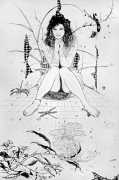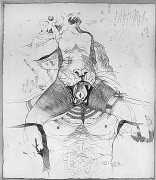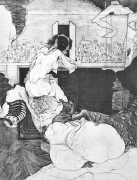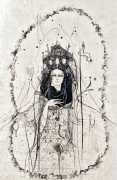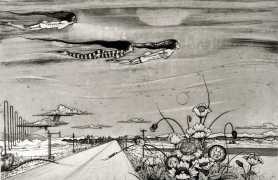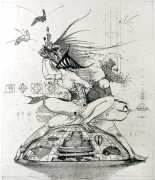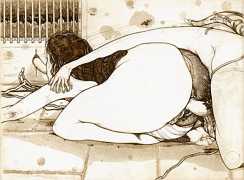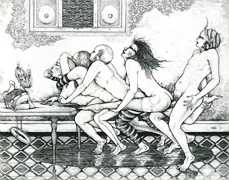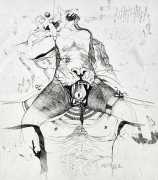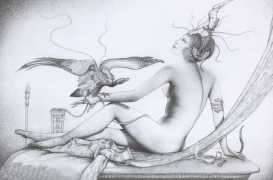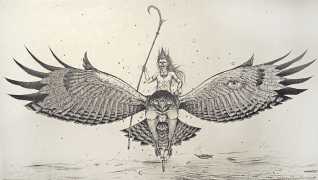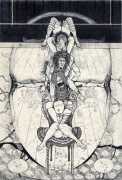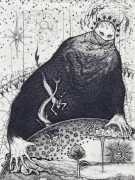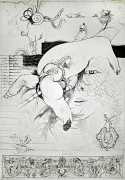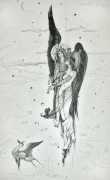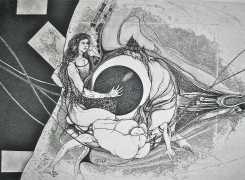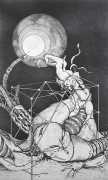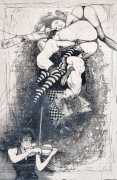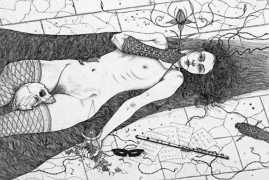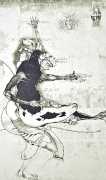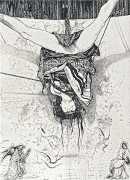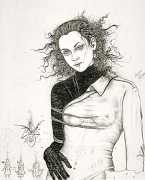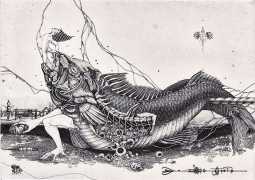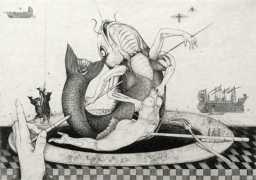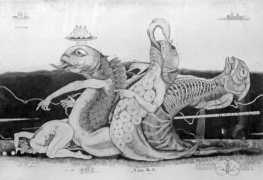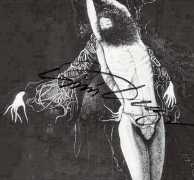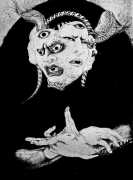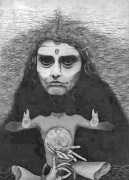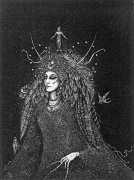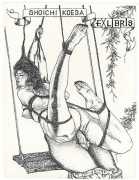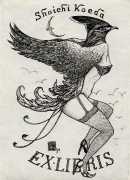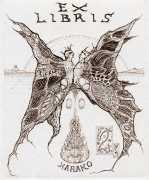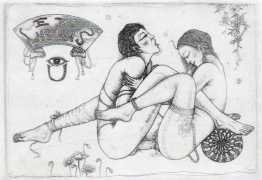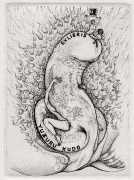 Shin Taga is the artist name for Arata Taga, 多賀新 (‘shin’, 新, is Japanese for ‘new’ or ‘avant-garde’), who grew up in Hokkaido, the northernmost of Japan’s main islands. Though self-taught, he mastered the skills of copperplate engraving and printmaking very quickly, and during half a century of work has built an impressive portfolio with his trademark elaborate conceptions of strange creatures, naked people, occult motifs and mythological connotations, all brought together in complex and detailed scenes of majestic horror, establishing Taga as one of Japan’s most talented and exciting printmakers.
Shin Taga is the artist name for Arata Taga, 多賀新 (‘shin’, 新, is Japanese for ‘new’ or ‘avant-garde’), who grew up in Hokkaido, the northernmost of Japan’s main islands. Though self-taught, he mastered the skills of copperplate engraving and printmaking very quickly, and during half a century of work has built an impressive portfolio with his trademark elaborate conceptions of strange creatures, naked people, occult motifs and mythological connotations, all brought together in complex and detailed scenes of majestic horror, establishing Taga as one of Japan’s most talented and exciting printmakers.
From 1972 onwards he exhibited at the Japan Print Association Exhibition, was awarded his first prize there the following year, and in 1974 was awarded the Grand Prix. 1974 also saw his first solo exhibition at the Shirota Gallery in Ginza, Tokyo.
 As well as exhibiting regularly, Shin Taga’s work has been published in three collections – Spring Dreamer: The Complete Works of Shin Taga 1973–1981 (Vintage, 1983), The World of Ranpo Edogawa (Shunyodo, 1992), and Shin Taga 1993–2019: The Trajectory of Pencil Drawing (Shunyudo, 2019). Ranpo Edogawa is the pen name of Tarō Hirai (1894–1965), a Japanese author and critic who played a major role in the development of Japanese mystery and thriller fiction, and from whom Shin Taga gained much inspiration. Both Taga and Edogawa were great admirers of Edgar Allan Poe, Ranpo being a Japanese rendering of Poe’s name. The influence of dark imagination and horror are clearly evident in Taga’s work.
As well as exhibiting regularly, Shin Taga’s work has been published in three collections – Spring Dreamer: The Complete Works of Shin Taga 1973–1981 (Vintage, 1983), The World of Ranpo Edogawa (Shunyodo, 1992), and Shin Taga 1993–2019: The Trajectory of Pencil Drawing (Shunyudo, 2019). Ranpo Edogawa is the pen name of Tarō Hirai (1894–1965), a Japanese author and critic who played a major role in the development of Japanese mystery and thriller fiction, and from whom Shin Taga gained much inspiration. Both Taga and Edogawa were great admirers of Edgar Allan Poe, Ranpo being a Japanese rendering of Poe’s name. The influence of dark imagination and horror are clearly evident in Taga’s work.
We are very grateful to our Russian friend Yuri for introducing us to the work of this artist, and for supplying most of the images.




